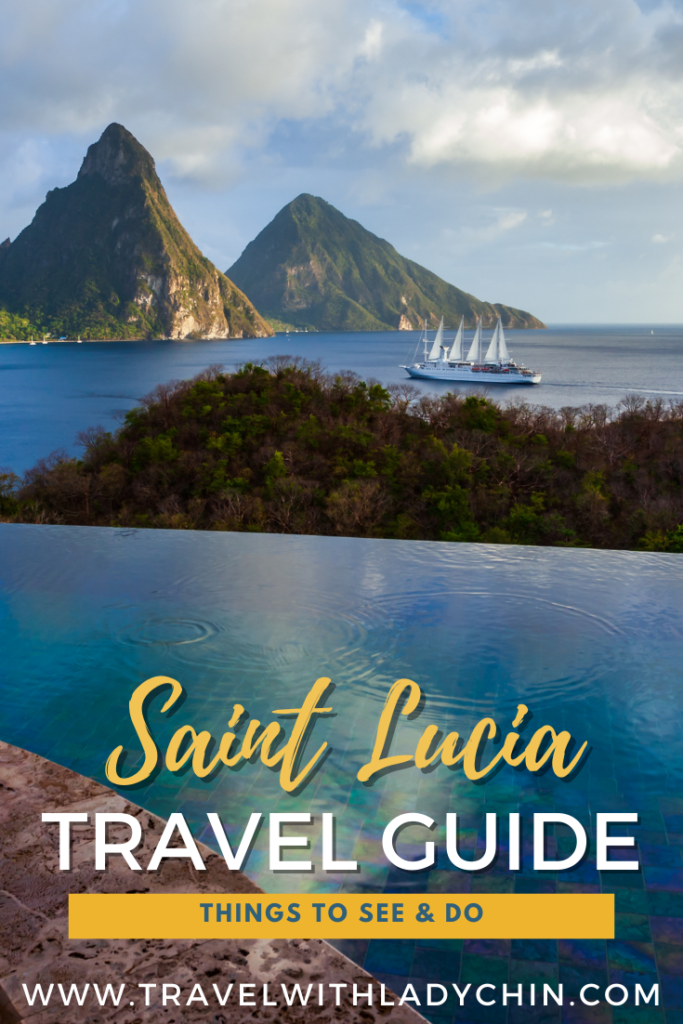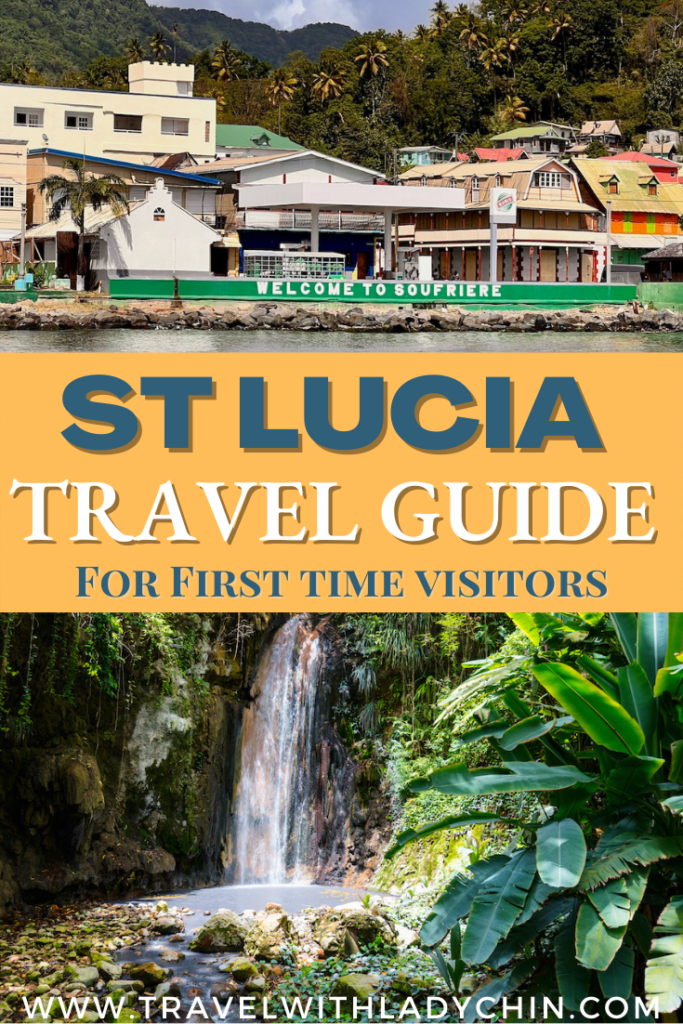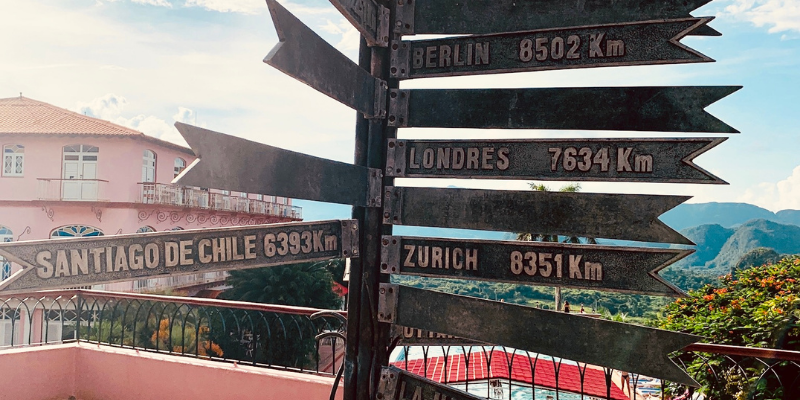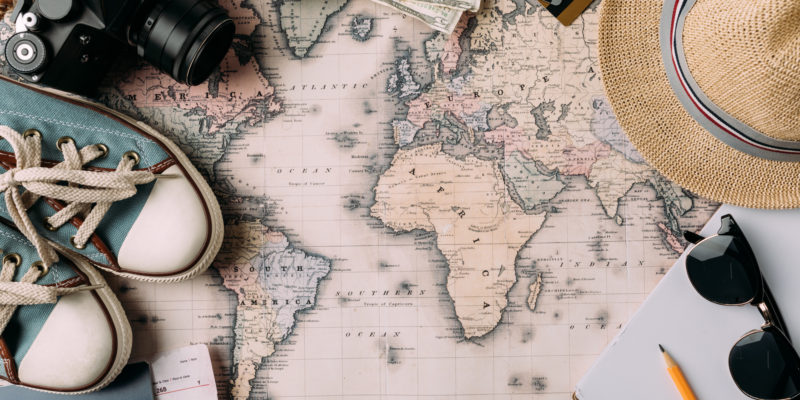Last Updated on May 4, 2024 by Lady Chin
Last month I had the incredible pleasure of visiting Saint Lucia, making it my 35th country! It’s no secret the Caribbean islands are home to some of the best beaches, beautiful landscapes, and overall good vibes. Saint Lucia didn’t disappoint.
In fact, my time spent on the island was so amazing that I didn’t want to leave! If you’ve ever considered visiting, this is your sign to book that trip immediately.
In this guide, I am sharing essential information for first-time visitors to help plan your visit so that you can focus on having a memorable experience on one of the most beautiful islands in the world.
This post contains affiliate links, meaning if you buy something through one of these links, I may earn a small commission at no extra cost to you. Please read my full disclosure policy for more information.
Pin Me for Later!
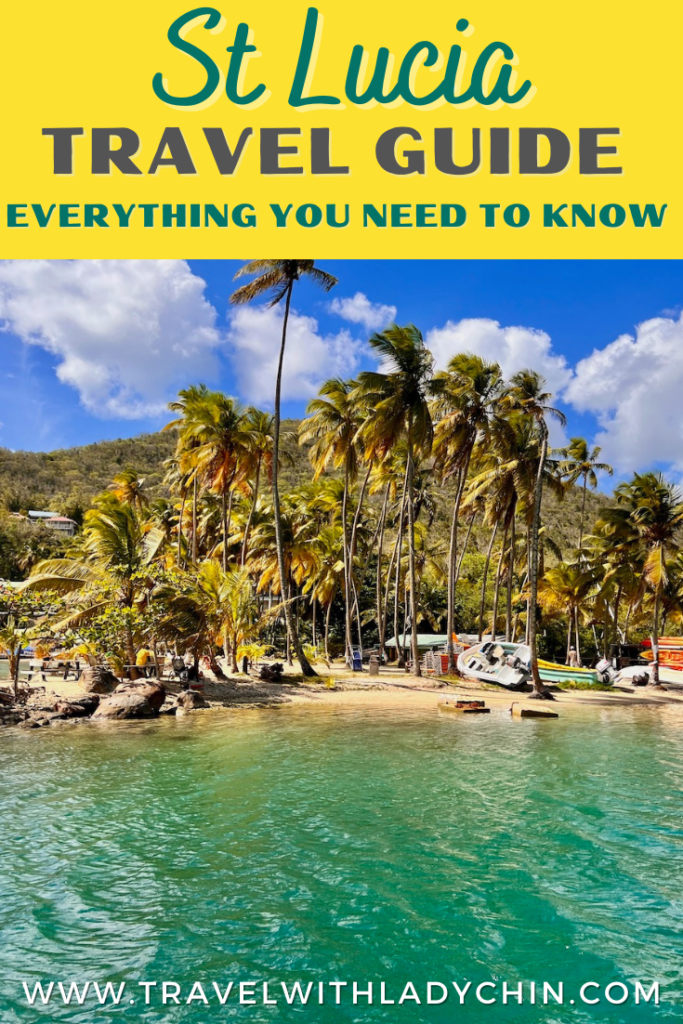
This is the fifth post in the Saint Lucia travel series. Here’s the complete 7-part series:
Saint Lucia Travel Series
Bucket List: 10 Awesome Things To See & Do In Saint Lucia
Travel Itinerary: How To Spend 5 Days in Saint Lucia
Inspiration: 30 Pictures That Will Make You Want To Visit Saint Lucia
Packing Essentials: Packing Guide for 5 Days in Saint Lucia
Travel Guide: St Lucia Travel Guide for First-Time Visitors
Land and Sea Tour Guide: Knotty Girls Speed Boat Tours
For the Culture: The Best Cultural Activities & Tours in Saint Lucia
Saint Lucia Travel Guide: Things to see and do
What to expect
Saint Lucia is located in the eastern Caribbean Sea, part of the Lesser Antilles chain of volcanic islands. It’s just south of Martinique and north of Saint Vincent. The island is small – 26.7 miles (43 km) long and about 14.2 miles (23 km) wide. You can easily drive around the entire island in one day.
The island is home to the impressive Pitons, two mountainous dormant volcanic plugs, incredible beaches, scuba diving and snorkeling, various outdoor activities, and more. This island offers something for everyone!
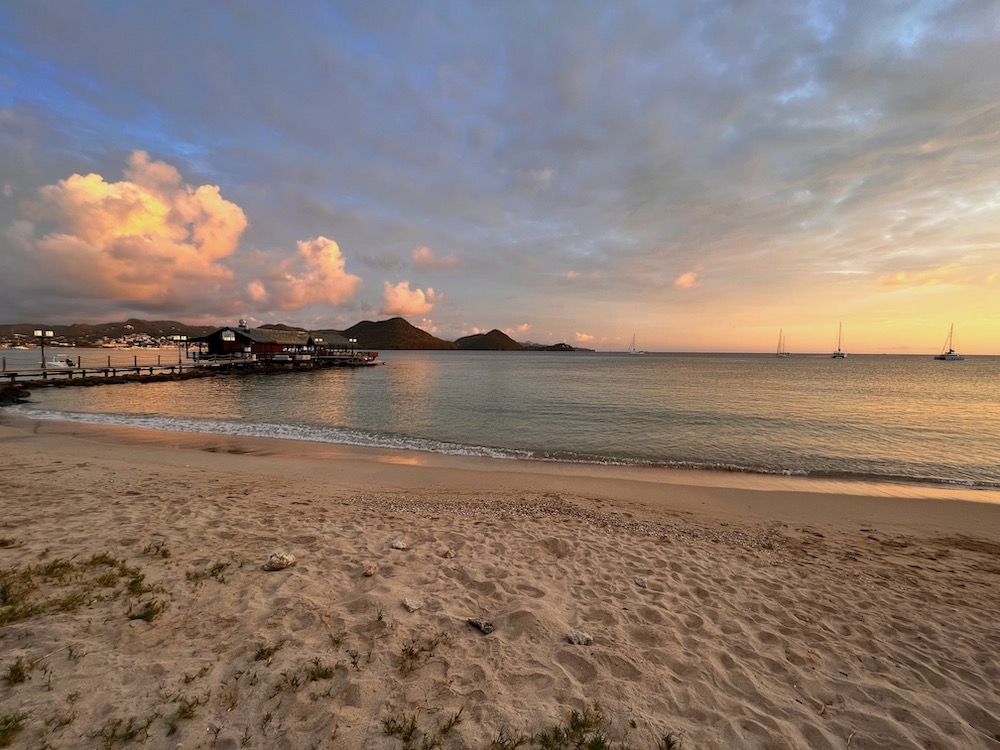
People and Culture
The rich and vibrant culture on the island is everywhere! I was proud to see the preservation and celebration of African traditions maintained through their music, language, and food. Lucian’s food is soo tasty!
The entire population of St. Lucia is about 178,000 people. Most people on the island are of African descent, followed by Biracial and small minorities of East Indians and Europeans.
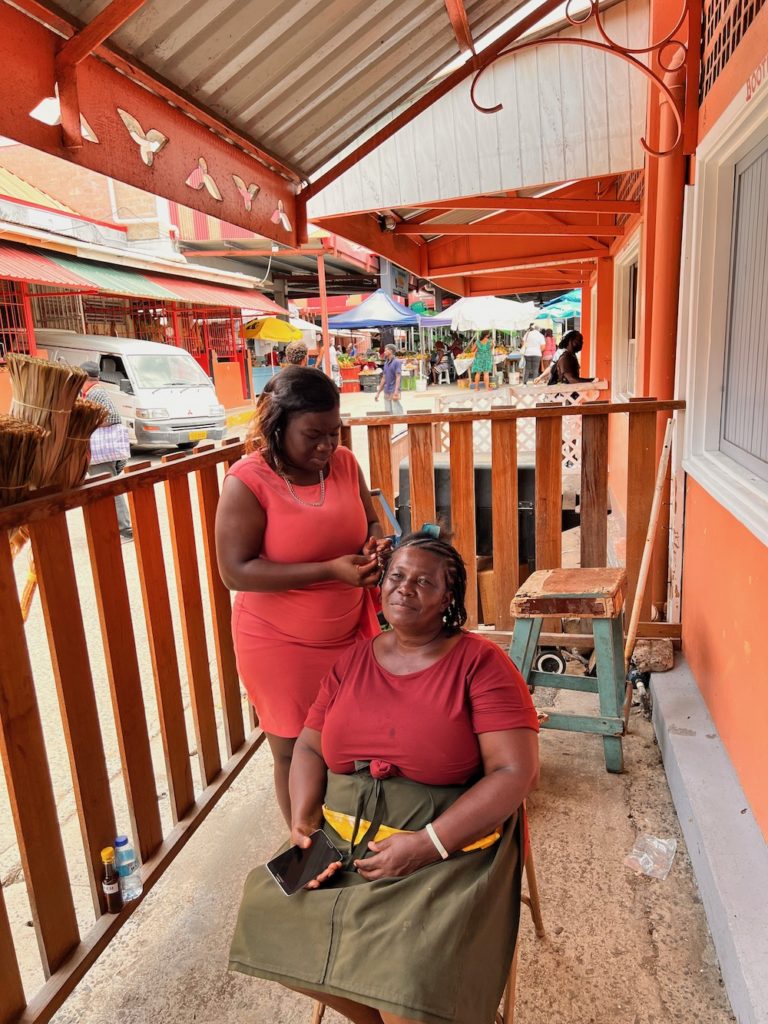
Best time to visit
Like most Caribbean islands, Saint Lucia has warm tropical weather all year round, with temperatures ranging from 80 to 95 ℉ (26 to 35℃). The island is quieter during the summer, with temperatures averaging 95 ℉.
During the colder months, December – March, tourists flock here to escape the cold winters, which means prices around the island increase. You can also expect more crowds during this time.
I would avoid visiting from the end of August until October, during hurricane season. During this time, the island experiences heavy spells of rain and wind.
I visited in May and couldn’t have picked a better time. The weather was exceptional, warm but not too humid, and it rained a little every morning, which I appreciated.
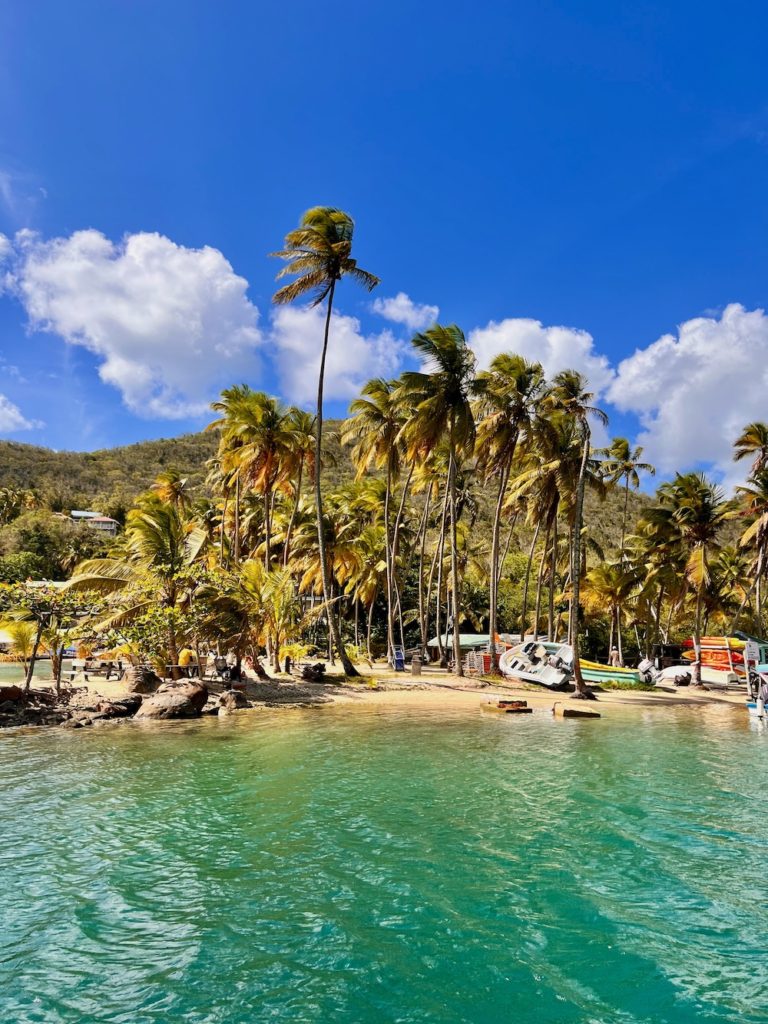
Language
English is the official language on the island, and most people speak Creole, known locally as Patwa. I noticed that the Creole spoken on the island was similar to Haitian Creole. So if you speak Creole, you will have no problems communicating with the Lucians.
Currency
Eastern Caribbean or EC dollars (XCD) is the local currency and is accepted everywhere on the island. The exchange rate for the U.S. dollar is EC $2.70 (as of 7/22).
You can use your U.S. dollars, but exchange rates tend to vary. I recommend downloading the Global Convert Currency & Units app to get the most up-to-date exchange rates if you visit outside the U.S. or other countries.
Credit cards & ATMs
Most major credit cards, such as Visa, MasterCard, and Discover, are accepted around the island. American Express is not widely accepted everywhere, but it’s worth asking if that’s your preferred payment method. I would recommend bringing a backup card, just in case.
ATMs are available throughout the island. You can find cash dispensers at the Bank of Saint Lucia branches (13 on the island), Massy Stores, Massy Store Mega, Hewanorra International Airport, and Rodney Bay Business Centre.
Insider tip: Before leaving the airport, I recommend withdrawing cash from the ATM. That way, you have money on hand if you need to tip your driver or buy anything. I also find withdrawing cash from ATMs is a great way to avoid paying commission fees when changing your money.
Plugs
St. Lucia uses a standard voltage of 240V with a frequency of 50Hz. The power plugs and sockets are a type G, with three triangular pins. My go-to adaptor worked out perfectly. This nifty thing works in over 100 countries!
Safety
Overall, the island is very safe. St. Lucia, being a small island, has a low crime rate, but that doesn’t mean you can be reckless, as petty theft may occur from time to time.
Be mindful not to leave your belongings unattended, never leave your drink unattended, and avoid walking around isolated areas at night.
You want to remain vigilant about your surroundings and never walk home alone, especially if you’re drunk.
A good rule of thumb is to practice the same levels of caution you would at home, and you’ll be fine. I will say that I felt very safe in St. Lucia and didn’t run into any issues.

Top things to see and do in St Lucia
- Hike or Tour the Pitons – The Pitons are dormant volcanoes: Gros Piton (2,619 ft) and Petit Piton (2,438 ft). Gros Piton, the bigger and more manageable of the two, takes about 2 hours to get to the top. The more challenging hike, Petit Piton, takes up to 4 hours to get to the top. You must hire a guide for both climbs as going alone is now allowed.
- Visit the Diamond Falls Botanical Gardens – Located in the heart of Soufrière, this 50 ft waterfall has the most exquisite colors due to the natural minerals. Here, you can hire a guide to learn about tropical foods and spices, visit the impressive waterfalls, and bask in the therapeutic hot springs.
- Go to the Castries Central Market – This open-air market is one of the largest markets in Saint Lucia, filled with over 300 vendors selling everything from fresh fruits, vegetables, spices, jewelry, clothing, and crafts.
- Go snorkeling and scuba diving – The best place to spend the day admiring the underwater wildlife is at Anse Chastanet in Soufrière. Anse Chastanet Reef is home to more than 150 different fish species and is known for its pristine coral reefs.
- Check out the Gros Islet Street Party – Every Friday night, rain or shine, this street party is known as “Friday Night Gros Islet Jump Up” and attracts locals and visitors alike. The streets come alive with vendors selling the freshest caught fish, barbecued meats, cocktails, and more.
- Sulphur Springs – One of the main attractions in Soufrière is the opportunity to swim and walk through bubbling mud, and hot springs and pools. The bath mud is packed with lots of good minerals for your skin!
- Toraille waterfall – After swimming in the mud baths, head to the Toraille waterfalls to rinse off and take in the breathtaking surroundings. I won’t lie; this was a busy tourist attraction, so if you’re looking to avoid the crowds, I recommend arriving early!
- Spend the day at the beach – St. Lucia’s beaches don’t disappoint. Most of them have turquoise water and white sand. Some notable beaches worth visiting include:
- Reduit Beach
- Jalousie Beach (also known as Sugar Beach)
- Marigot Bay
- Pigeon Island Beach – (Local favorite)
- Anse Chastanet
- Anse Louvert – (accessible by foot but worth checking out if you’re looking for a more secluded beach)
Other activities worth checking out:
- Piton Waterfall
- Superman and Sapphire Waterfall
- Ziplining
- Tet Paul Nature Trail
- Chocolate making experience
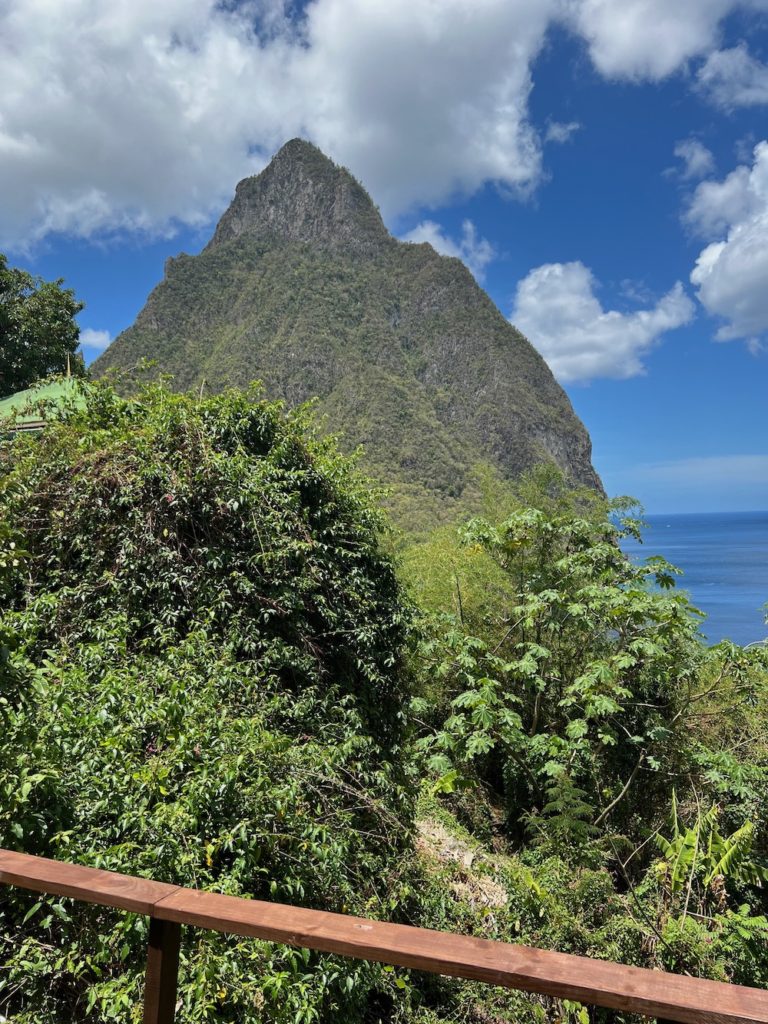
Foods to try
Like the rest of the Caribbean, St Lucian food is an explosion of flavors and spices perfectly infused together. For an affordable meal at a casual restaurant, you’ll pay around 15 XCD and upwards of 80-100 XCD at a fancier establishment.
I loved the food and recommend trying some of the Lucian staples during your visit.
- Rice and Beans
- Plantains
- Provisions (essentially root vegetables including sweet potatoes, dasheen, cassava, breadfruit, and yams)
- Fig greens and saltfish – this is the island’s national dish made from green bananas and codfish.
- Bouyon – hearty meat stew
- Lambi – this tasty dish is made with conch and creole seasoning and pan-fried.
Insider Tip: If you’re staying in Castries or the northern part of the island, visit Castries Central Market for authentic and delicious food. There are vendors in the back of the market selling food for affordable prices. I paid 8 XCD for a giant plate of food. If you’re staying in Soufriere in the western part of the island, head to Mama’s Kitchen for traditional Lucian food.
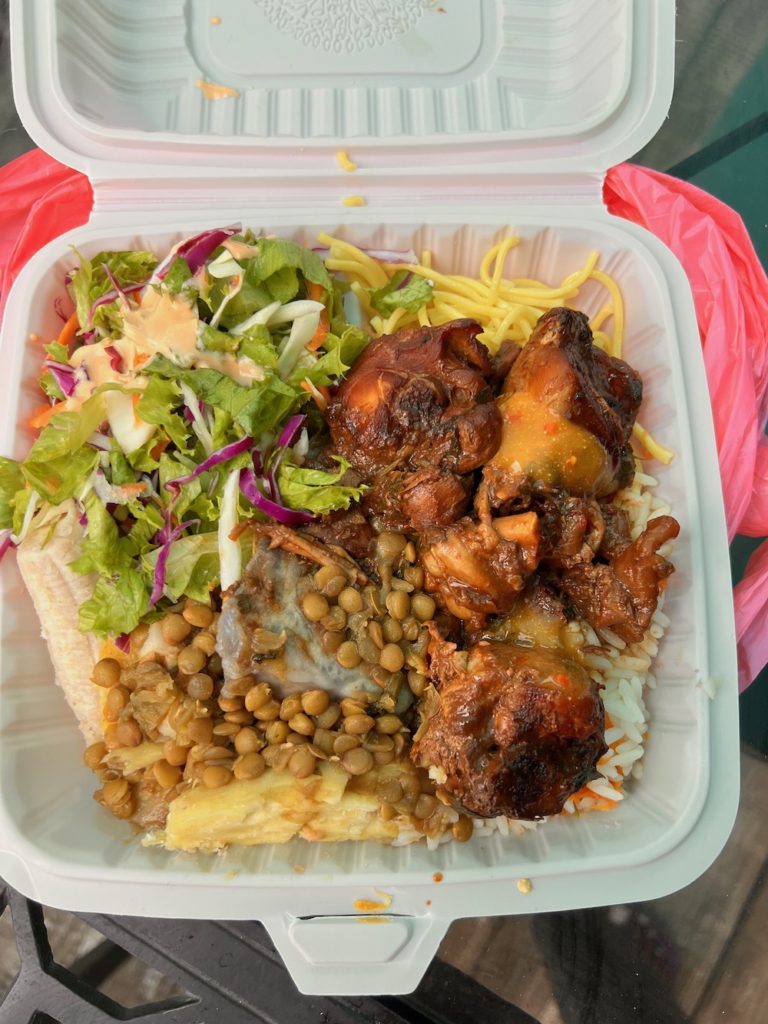
Where to stay in Saint Lucia
There are a variety of accommodations to choose from in Saint Lucia. Most people opt to stay at resorts or hotels because it’s easy, and you have everything at your fingertips. I stayed at this Airbnb 10 minutes from downtown Castries which was perfect! But if you decide to go the hotel or resort route, here are my suggested places to stay:
- Bay Gardens Hotel & Resorts – (Rodney Bay Village, Castries)
- Windjammer Landing Villa Beach Resort – (Castries)
- Stonefiled Villa Resort – (Soufrière)
- Fond Doux Eco Resort – (Soufrière)
Insider Tip: There are no hostels on the island. To keep costs low, travel with multiple people and split your lodging expenses.
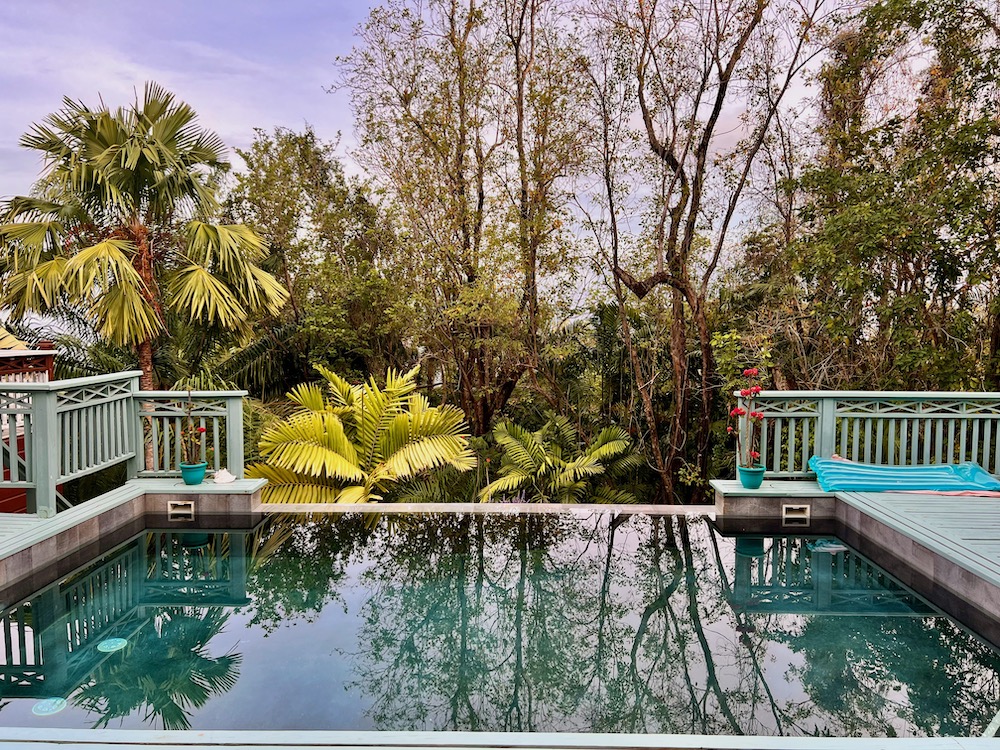
How to get around St. Lucia
The easiest and fastest way to get around Saint Lucia is by renting a car. Remember, on the island, they drive on the left side of the road and the left side of the vehicle.
Here are other transportation options:
Minibus: Residents primarily use minibusses to get around the island as it’s the most economical way to get from point A to point B. These minibusses loop around the main towns. The average cost to hitch a ride is between 2.50-8 XCD.
- Taxi: Taxis are available throughout the island. Be on the lookout for the taxis with a light blue number plate with a TX prefix; those are the authorized taxi drivers. Prices always vary, and be sure to agree upon a price beforehand. The average price to get a taxi from the international airport (Hewanorra) to Castries costs around 215 XCD, Castries to Soufrière is about 250 XCD, and Rodney Bay to Gros Islet is 30 XCD.
Bicycles: Bike rentals are a great way to go off the beaten path and explore independently. Rentals cost around 12 XCD per day.
Insider Tip: The roads are well paved and windy, with lots of sharp turns.
Money saving tips
Saint Lucia is not the ideal island if you’re looking for an inexpensive getaway. I am not saying don’t visit because it’s absolutely worth it, but here are a few ways to help you keep your spending to a minimum.
- Shop duty-free – The island has a variety of duty-free shops where you can buy discounted designer clothing, jewelry, and perfumes. The imported labels tend to be more expensive at the local grocery stores. The airport also has a duty-free shop for buying items as well. Personally, I use duty-free for purchasing alcohol.
- Book in advance – If you’re planning excursions, especially diving, check online with tour companies for discounts. With some research and time, you might find better deals than just showing up and paying for the activity.
- Be on the lookout for discounts and deals – The tourism board for the island has an entire section dedicated to seasonal discounts and deals. While most deals are for accommodations, it’s still worth checking out St Lucia’s Official Tourism Website.
- Hang out in nature – The island is the perfect place to enjoy the natural scenery and beautiful landscapes. Enjoy the beach, go for a hike, catch a sunset, or better yet, the sunrise!
- Stay with friends or family – If you are fortunate enough to have friends or family who live on the island, staying with them is a no-brainer. It’s THE best way to save your coins!
- Bring a water bottle – The tap water on the island is chlorinated and considered safe to drink, but it may taste a little strange. Especially if you’re not used to the taste. I stuck to bottled water, but in hindsight, I wish I had brought a reusable water bottle with a filter. Lifestraw is usually my go-to brand. Their bottles have built-in filters for clean and safe water drinking.
Conclusion – Lady Chin’s two cents
There you have it! I don’t have anything negative to say about the island! Everything was perfect, and I only wish I had visited sooner! I can guarantee you will fall in love with the island just like I did! I hope you found the advice in this travel guide helpful, especially if you’re planning on visiting for the first time.
Related Posts
Liked this post? Pin it and save it for later!
